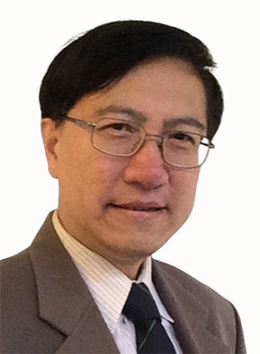
Ning
WANG
王寧
Professor Wang obtained his BSc (1985) and PhD (1990) degrees in materials physics from the University of Science and Technology, Beijing. In 1989, he received an Alexander von Humboldt Research Fellowship and worked in the Institute for Metal Physics, Goettingen University and the Fritz-Haber-Institute of the Max-Planck Society, Berlin, Germany. In 1993, he joined the Physics Department of the Hong Kong University of Science and Technology. During 1997-2000 he worked in the Department of Applied Physics and Materials Science, the City University of Hong Kong. Professor Wang has authored/co-authored over 300 peer-reviewed research papers in reputed international journals. He received Chien-Shiung Wu Physics Award, State Natural Science Award and OCPA Achievement in Asia Award.
Representative Publications
- “Intrinsic nonlinear Hall effect and gate-switchable Berry curvature sliding in twisted bilayer graphene”, Meizhen Huang, et. al., Phys. Rev. Lett. 131(2023) 066301.
- “Giant nonlinear Hall effect in twisted WSe2”, Meizhen Huang, et. al., National Sci. Rev. 10 (2023) nwac232.
- “Bridging the gap between atomically thin semiconductors and metal leads”, Xiangbin Cai, et. al., Nature Comm. 13 (2022)1777.
- “Interaction effects and superconductivity signatures in twisted double-bilayer WSe2”, Liheng An, et. al., Nanoscale Horizons, 5(2020)1309.
-
“Intrinsic valley Hall transport in atomically thin MoS2”, Zefei Wu, et. al., Nature Comm. 10(2019)611.
- “Odd-Integer quantum Hall states and giant spin susceptibility in p-type few-layer WSe2”, S.G. Xu, et. al., Phys. Rev. Lett., 118 (2017) 067702.
- “Even–odd layer-dependent magnetotransport of high-mobility Q-valley electrons in transition metal disulfides”, Z.F. Wu, et. al., Nature Comm. 7(2016) 12955.
- “High-quality sandwiched black phosphorus heterostructure and its quantum oscillations”, X.L. Chen, et. al., Nature Comm. 6, (2015) 7315.
- “Growth of Nanowires”, N. Wang, et. al., Mater. Sci. Eng. R60 (2008)1-51.
- “Superconductivity in 4 Angstrom Single-Walled Carbon Nanotubes”, Z. K. Tang, et. al., Science 292 (2001) 2462.
- “Single-walled 4-Å carbon nanotube arrays”, N. Wang, et al., Nature, 408 (2000) 50.